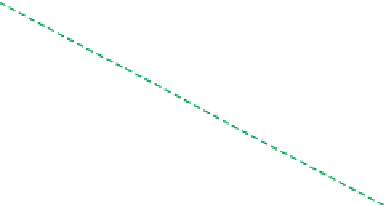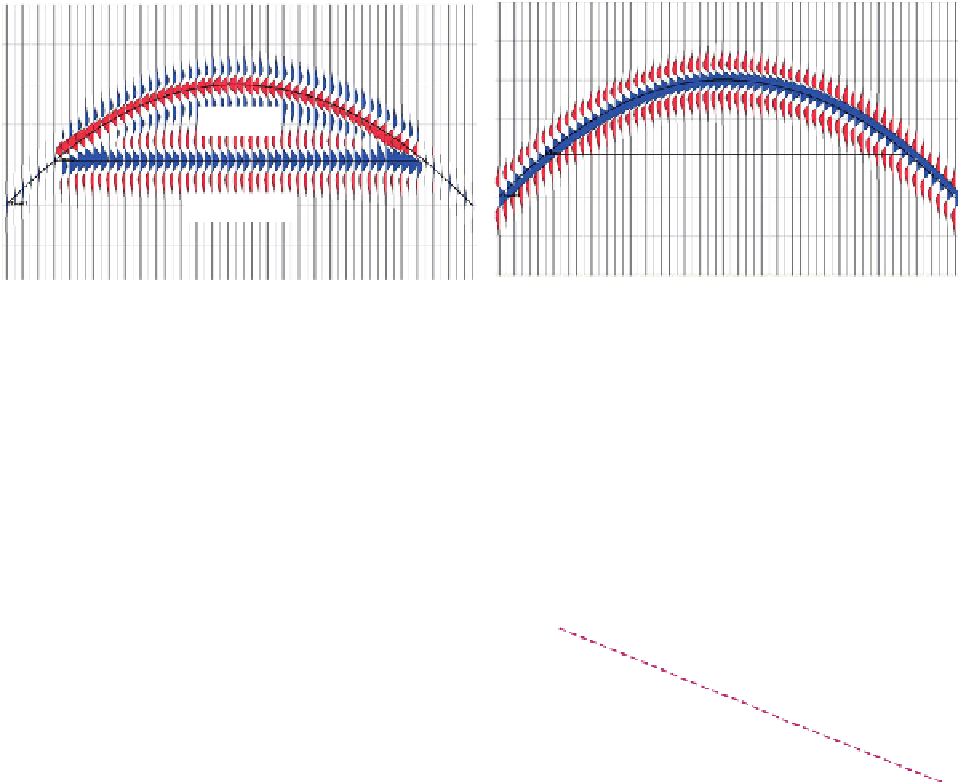Geology Reference
In-Depth Information
a)
b)
θ
= 36º, sin
2
θ
= 0.35
sin
2
θ
= -0.35
Shale
Shale
Oil sand
Oil sand
Water sand
Water sand
AI
=
Figure 5.53
The 2D model showing seismic projections at different values of sin
2
θ; (a) sin
2
θ ¼ 0.35 (θ ¼ 36°) and (b) sin
2
θ ¼0.35.
model (
Fig. 5.53
) shows how, with this dataset, the
fluid effect can be maximised at sin
2
Porosity
dominates
reflectivity
0.8
θ ¼
0.35, whereas
the fluid effect
is removed with a projection at
Fluid
dominates
reflectivity
0.6
sin
2
0.35.
Figure 5.54
illustrates a model AVO plot in which
the porosity is varied as well as the fluid content. At
sin
2
θ ¼
0.4
45°) the various porosity cases
for each fluid type converge (effectively presenting an
angle at which fluid effects might be optimised).
Porosity is optimised where the different fluid cases
for each porosity converge at around sin
2
θ ¼
0.5 (i.e.
θ ¼
0.2
0
0.5.
Note that the angle at which the convergence occurs is
not the same for all porosity cases, but it is close
enough for the idea of a lithological projection to be
a practical possibility. Reality is often more complex
than the simple models shown but they highlight how
AVO is a continuum of rock and fluid effects. Indi-
vidual seismic stacks are effectively snapshots along
this continuum.
Whilst the principle of AVO projections can
be appreciated by using the AVO plots shown in
Figs. 5.52
and
5.53
, the AVO (intercept and gradient)
crossplot is the best way to approach AVO analysis
owing to the ability to identify different populations of
responses.
Figure 5.55
illustrates how projections work
in R
0
-
θ ¼
-0.2
-0.4
-1
-0.5
0
0.5
1
Sin
2
θ
24% por wet
20% por wet
28% por wet
24% por oil
20% por oil
28% por oil
Figure 5.54
AVO plot showing Shuey reflectivity responses for
different shale/sand and fluid fill combinations.
the x axis as the reflectivity projection axis onto which
the data points are projected. So, an angle projection at
zero degrees (i.e. R
G space using model data for a Class I brine
sand/ Class IIp oil sand situation. It is useful to think of
94
R
0
+ G sin
2
0°) is simply a
¼



















































